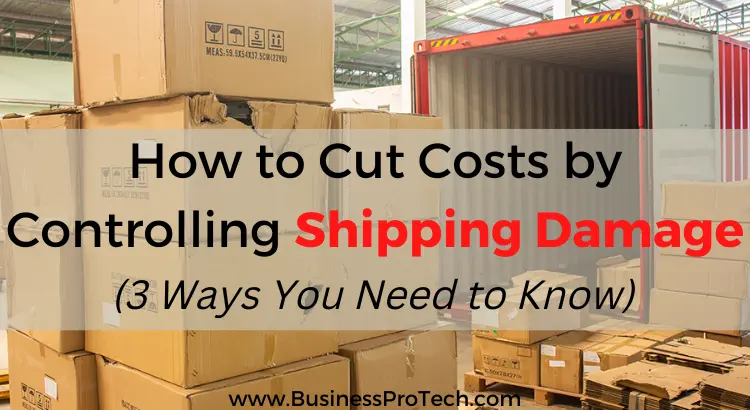When your products get damaged in shipping, you have to replace them at your expense. Shipping damage can lead to unhappy customers, and cost you further sales as well.
And while you can’t prevent every instance of shipping damage, you can substantially reduce shipping damage and that will cut costs meaningfully.
Mitigating shipping damage is often a matter of packaging your shipments correctly, with plenty of cushioning material and sturdy boxes. You can also use impact indicators to test your shipping routes and carriers for conditions that contribute to shipping damage and to make sure that your packaging can hold up to impact stresses.
Here’s what you need to do to cut costs by controlling shipping damage.

Pack Your Shipments Properly
Packing your shipments correctly, with the right size boxes and the right cushioning material, can make all the difference when it comes to preventing shipping damage. The box you choose for shipping your contents should be appropriately sized.
If you’re shipping more than one item in a box, arrange the items you’re shipping together in a grouping similar to the way they will go in the box, and measure the grouping for size.
Ideally, you want a box that leaves about three inches of room around the package contents for cushioning material or dunnage. However, you can’t always find a box that’s just the right size. Get a box that’s as close to the right size as possible. Place your contents in the middle and fill in the space around the object(s) with cushioning material.
Make sure to place cushioning material underneath and on top of the package contents, because your package will likely have other packages stacked on top of it and will need to withstand that pressure.
You have several kinds of cushioning material you can use to pack boxes for shipping. Common cushioning materials include bubble wrap, air pillows, packing peanuts, and molded pulp or molded styrofoam packaging.
Wrap delicate items in bubble wrap and double-box them for shipping. If you’re double-boxing something, make sure you place cushioning material in between the interior box and the exterior box.
Always use new cardboard boxes and packing materials; shipping boxes and cushioning materials are only meant to be used once and could start to break down if used a second time.
Label Fragile and Perishable Shipments Accordingly
If you’re sending perishable or fragile items, or live plants or animals, label your packages accordingly. Carriers need to know when a package requires special handling.
A package labeled “fragile” will be placed in a protected area of the truck instead of at the bottom of a stack of other boxes. A package labeled “live animals” will be handled with more care than one that is not.
If you’re shipping perishable items like food, use a “perishable” or “refrigerate upon arrival” sticker. Pack perishable foods that need to stay cold with gel packs and styrofoam insulation. Pack perishables that need to stay warm with heat packs.
If you’re putting dry ice in a package, you need to put a “dry ice” label on the outside of the package because dry ice is considered a hazardous material, and carriers need to know when they’re handling it.
Gather the Right Data
The right data can help you take shipping damage prevention to the next level. Packaging your shipments with plenty of cushioning material can protect your shipments from a lot, but without data on what your shipments are facing in transit, you’re still just going in blind.
Use impact indicators to gather the data you need about what your shipments are going through en route. Impact indicators can collect data on shocks, falls, vibrations, and other kinds of stresses your packages experience in transit.
You can use impact data to ensure that delicate items haven’t been subject to potentially damaging stressors, but you can also use them to perform impact tests that tell you exactly how many times your packages are getting dropped or what parts of the route are subjecting them to the most stress via vibrations or shocks.
Test shipments can tell you whether one carrier really does handle your packages more carefully than another, or whether you might need to route your packages around a particularly rough stretch of road.
Wrap Up!
If there’s one way you can meaningfully manage costs in your operation, it’s by taking steps to prevent shipping damage.
When the causes of shipping damage are properly addressed, you’ll spend a lot less money resolving customer complaints, and that will mean you’ll have more funds to put back into your business.